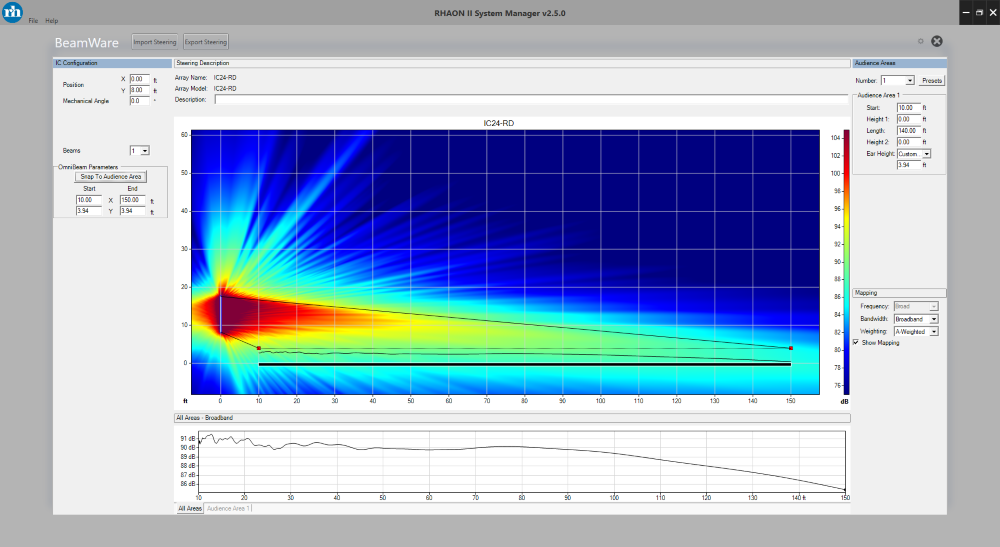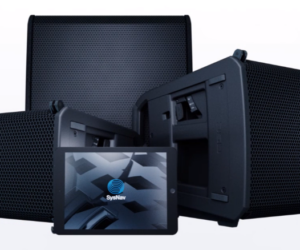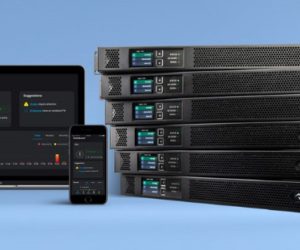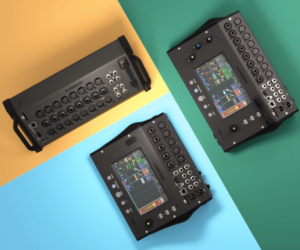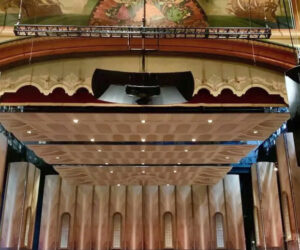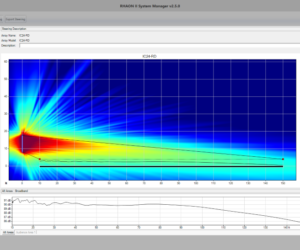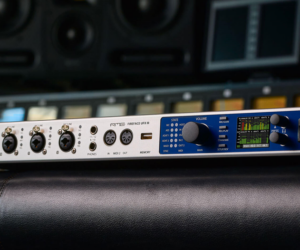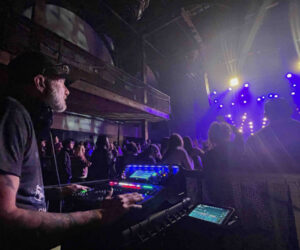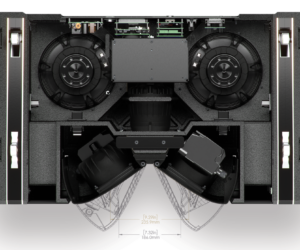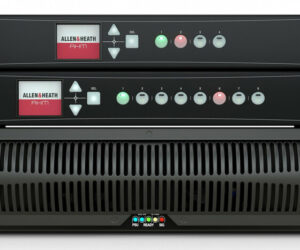Ever walk into a room with high ceilings, glass walls or other hard architectural surfaces and try having a conversation or conference call? It’s like talking in an echo chamber. That’s because sound consists of pressure waves that bounce off the floor, walls, ceiling or any other reflective surfaces, gradually losing energy over time.
Reverberant spaces, like auditoriums or transportation hubs, require highly-directive loudspeakers like beam-steered arrays to offset the reverberation and provide listeners with exceptional audio experiences. The practical application of beam steering is that it creates a tightly-controlled acoustic profile similar to that of a mechanically-curved line array but in a much smaller, more aesthetically pleasing column form factor that can hide in plain sight. However, beam steering has an industry reputation for requiring a lot of knowledge and time to get good results.
Enter OmniBeam.
How Beam Steering Works
Technically speaking, beam steering increases the direct energy (as opposed to reverberant energy) in a space by directing sound at the audience to improve speech intelligibility and music reproduction. There’s a lot of advanced math involved in beam steering; discrete Fourier transforms, integrals, advanced summations and a smattering of dark, mystical incantations are at work. But luckily, we have computers and digital signal processing to do the heavy lifting.
The goal is consistent front-to-back audience coverage, meaning the people at the front of the room hear sound at approximately the same SPL and intelligibility as those in the back, even over distances exceeding 100 feet (~30 meters). Achieving consistent coverage involves pointing different beams at separate sections of the audience.
Having multiple beams requires multiple drivers, so beam-steered arrays typically have eight to 32 drivers or more. And each driver requires separate amplification and DSP channels to enable steerage. The reason is that frequencies behave differently over distance and decay at different rates, so each driver may have individual high-pass filters (HPF) applied to maintain coverage consistency.
And there are limitations on the range of frequencies that beam steering affects. For instance, the height of the column loudspeaker determines the lowest frequency at which it can exert any control over the vertical dispersion. Conversely, the spacing between drivers determines the highest frequency at which the driver array acts as a line source rather than a collection of separate sources. The smaller the spacing, the higher the frequency beam steering can affect.
All of these considerations can result in a fair amount of frequency adjustments and onsite tuning, which can be challenging for integrators.
What Makes OmniBeam Different
With OmniBeam, Renkus-Heinz is changing the perception that beam steering is knowledge and time intensive — for niche applications only. Their new algorithm is the culmination of decades of expertise in steerable technology, replacing their previous “best-fit” algorithm to now deliver unmatched sound and coverage for 100% of venues with less time and knowledge required than ever before.
The original steering paradigm was based on beam steering: System commissioners had to custom-configure each discrete “constant lambda” beam, measuring relative gain, high-pass filter frequency, beam size and acoustic center for however many beams were necessary to generate consistent coverage and frequency response across the listening area. While this process produced exceptional, custom-tailored sound, it could take time for the inexperienced.

In 2015, Renkus-Heinz unveiled a new paradigm for their steerable products, replacing constant-lambda technology with an algorithmic approach. The first iteration of this calculation and simulation program, UniBeam, simplified the commissioning process using a predictive best-fit system, generating a recommended beam setup that would work well for most venues without any user input required. The enhanced algorithms automatically calculated the optimal beam design, acoustic centers, and level profiling for the room — delivering reliable results fast. While this iteration produced exceptional results for about 85-90% of venues, the remaining 10% of installations required additional user input for optimal results.
While the original UniBeam implementation made steerable solutions more accessible, Renkus-Heinz has continued to innovate the technology, seeking to ensure the best results for 100% of spaces while making beam steering even easier to use. The all-new OmniBeam algorithm is the culmination of decades of expertise in steerable technology and the fulfillment of the company’s mission to ensure exceptional, accessible, hassle-free sound for every venue.
Replacing the previous best-fit approach, the new OmniBeam algorithm is based on beam shaping rather than beam steering. The ideal beam shape is automatically created from parameters defined by the user within the new BeamWare interface. The all-new algorithm generates ideal FIR coefficients for every unique venue, delivering faster, better and more consistent results than ever before with less time and knowledge needed. The result is custom-tailored coverage precisely dialed into the exact geometry of each space, providing the most consistent front-to-back audio experience possible. Equally important, OmniBeam allows integrators, regardless of their level of expertise, to achieve great results with minimal effort, every time.
Ralph Heinz, CTO at Renkus-Heinz, was instrumental in the development of OmniBeam. “The driving philosophy behind OmniBeam was to give consultants and integrators back their time,” he explains. “By taking the rocket science out of simulating and commissioning steerable arrays, Renkus-Heinz has demonstrated how beam steering is suitable for more venues than just reverberant spaces — they’re as simple to deploy as point and shoot.”
Renkus-Heinz product manager Brandon Heinz spoke about how the name OmniBeam encapsulates this philosophy. “OmniBeam is omnipotent in that it works for every venue,” he said, “and it’s omnipresent in that it improves every single one of our steerable products. The ultimate goal was accessibility — the idea that everyone could get custom-tailored sound for any space.”
OmniBeam in Use
OmniBeam is housed inside Renkus-Heinz’s free RHAON II software. Once you open the interface, select the appropriate loudspeaker and enter the room’s length. Then, press the “snap to audience area” button. And voila — all the beam-steering calculations, frequency adjustments, and FIR filter calculations are completed for you. If you blink, you’ll miss it.
Many adjustments can be made simply by moving the on-screen aiming handles (because who doesn’t like to tinker?). If you want more energy in the front, just move the handle where you want it, and the coverage follows. And that’s it. For more granular control of the beams, Renkus-Heinz still provides access to advanced controls should you need them.
While beam steering may sound like magic, it can’t defy the laws of acoustical physics. But with Renkus-Heinz’s OmniBeam, you may feel like you’re bending them a little.
Go here for more specifics on OmniBeam.


